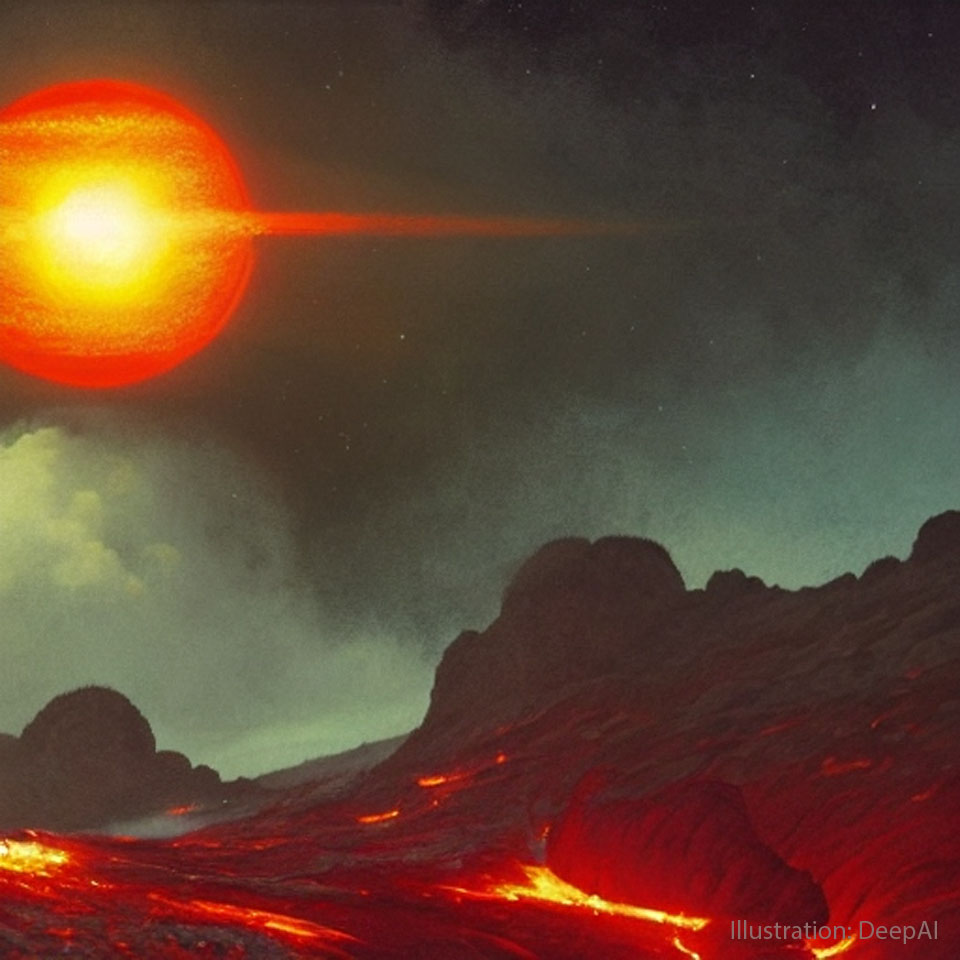2023年1月24日
LHS 475 b: Earth-Sized Exoplanet
Illustration Credit: DeepAI’s Fantasy World Generator
Explanation: If you could stand on exoplanet LHS 475 b, what might you see? No one knows for sure but pictured here is an interesting guess made by an Earth-based artificial intelligence (AI) engine. The existence of the exoplanet was indicated in data taken by the Earth-orbiting TESS satellite but confirmed and further investigated only this year by the near-Earth Sun-orbiting James Webb Space Telescope. What is known for sure is that LHS 475 b has a mass very similar to our Earth and closely orbits a small red star about 40 light years away. The featured AI-illustrated guess depicts a plausibly rugged Earth-like landscape replete with molten lava and with the central red star rising in the distance. Webb data does not as yet reveal, however, whether LHS 475 b has an atmosphere. One of Webb’s science objectives is to follow up previous discoveries of distant exoplanets to better discern their potential for developing life.
Comet ZTF Gallery: Notable Submissions to APOD
Tomorrow’s picture: a dark space
LHS 475 b: 地球尺寸的系外行星
图标提供: DeepAI’s Fantasy World Generator
说明: 如果你能站在系外行星LHS 475 b上,你会看到什么?没人能说个准,但是这幅由地球上的人工智慧(AI)引擎所绘制的图标,呈现了一种很有趣的揣测。低地球轨道上的TESS卫星之数据,显示这颗系外行星的存在,但直到今年,近地太阳轨道上的韦伯太空望远镜.,才加以证实并进行更深入的探索。可以肯定的是,LHS 475 b的质量与我们的地球非常相近,并且绕行约在40光年远处的小红矮星。在这幅由人工智慧引擎绘制的主题揣测图标里,这颗行星拥有类地球的崎岖原野,到处都是泛流的熔岩,而位在轨道中心的泛红母星则从远方升起。然而,韦伯望远镜的数据尚未证实LHS 475 b是否有大气。韦伯的科学目标之一是追踪先前发现的遥远系外行星,以进一步甄别它们作为生命发展载体的潜质。(编者声明:本文的撰写并未借助于AI。)
彗星ZTF画廊: 提交给APOD的值得纪念的图片
明日的图片: a dark space







